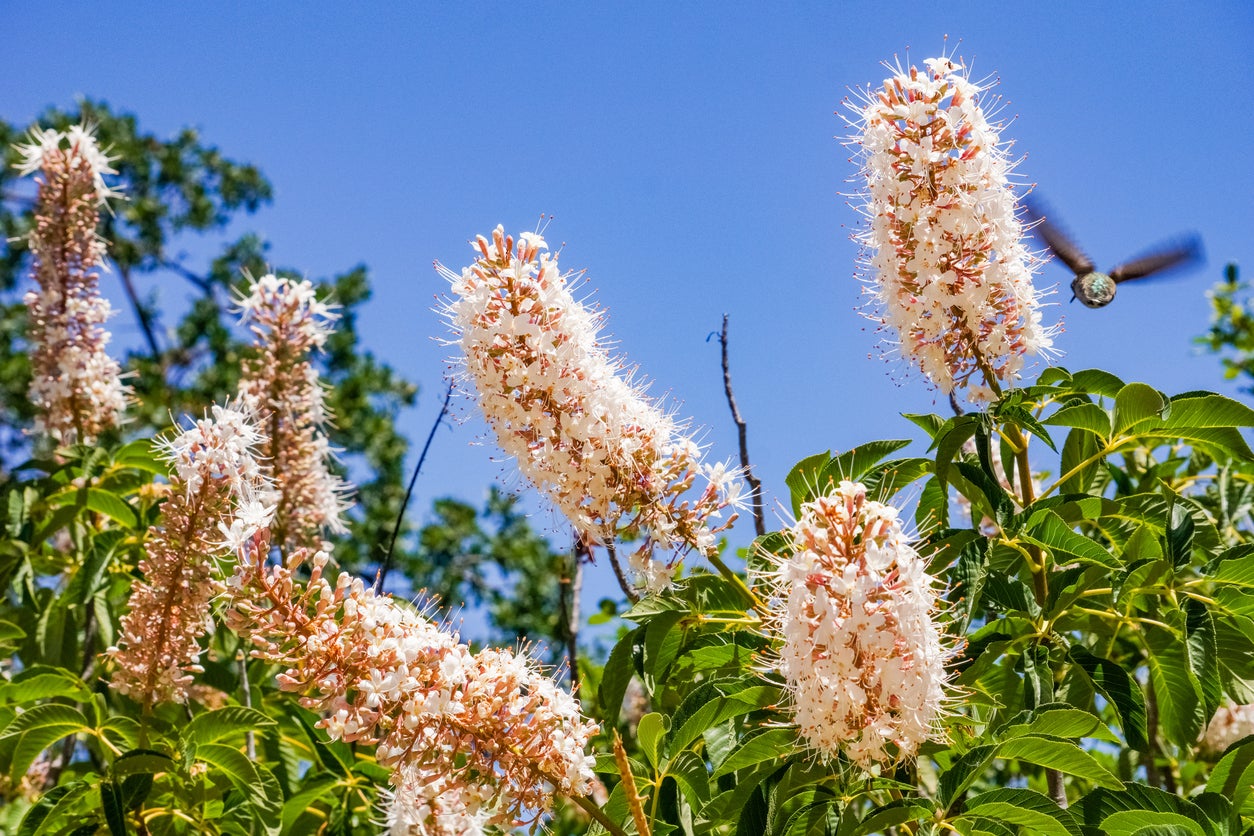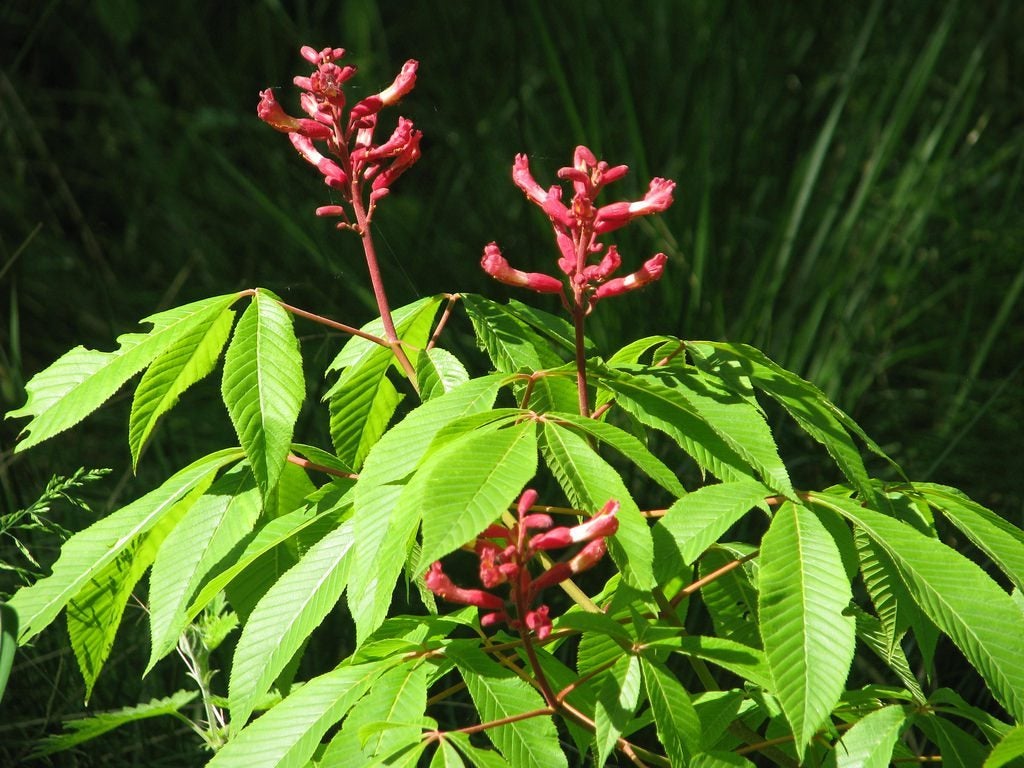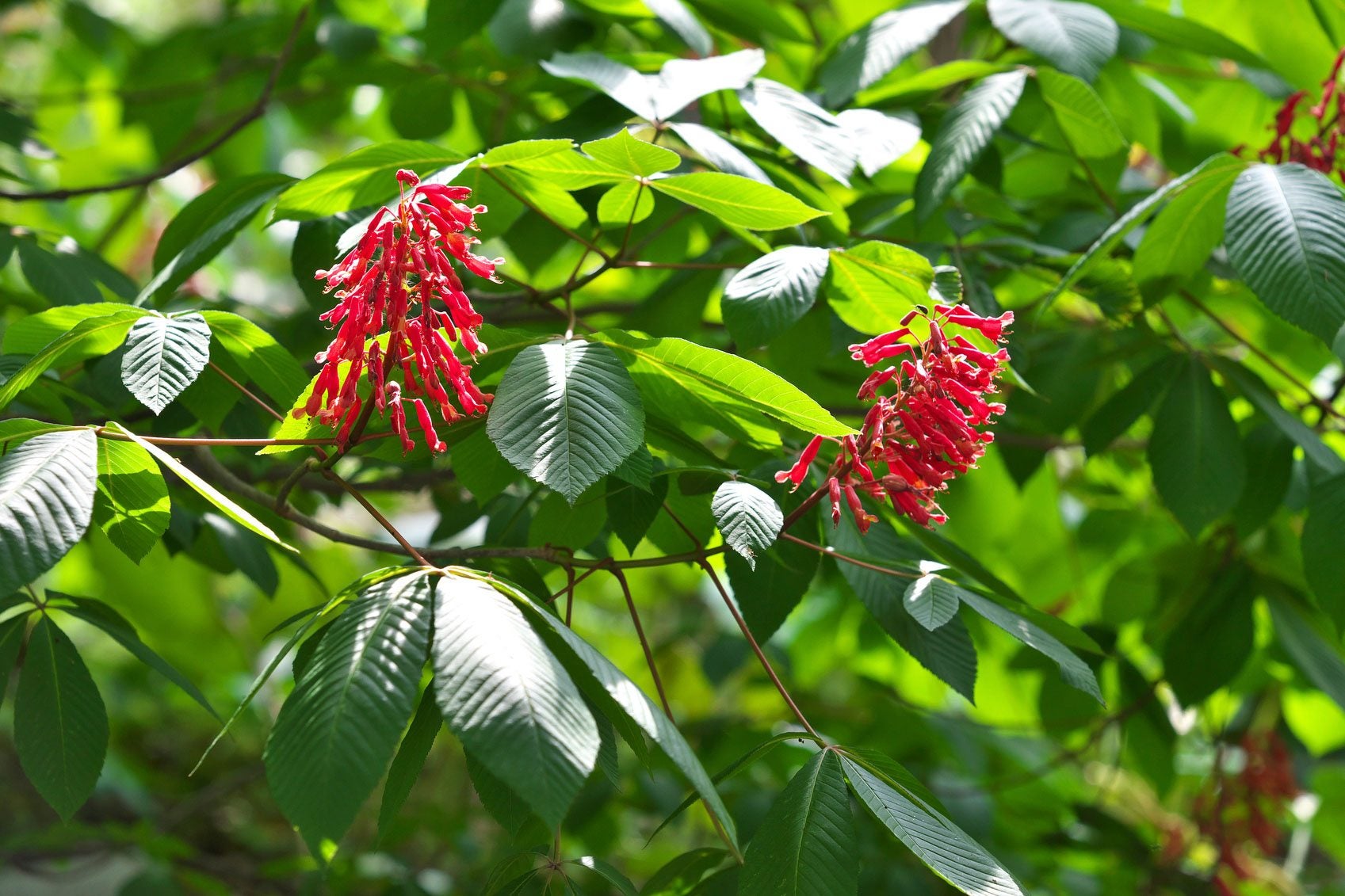California Buckeye Care: How To Plant A California Buckeye Tree


Planting California buckeye trees is a great way to add shade and visual interest to the home landscape. Growing California buckeyes is not only easy but also provides habitat for native wildlife and pollinators. With knowledge of a few California buckeye facts, homeowners will be able to make a more informed decision regarding whether or not this tree is a good choice for their yard.
California Buckeye Facts
California buckeye trees (Aesculus californica) are native to parts of California and southern Oregon. As a result of local growing conditions, this tree is specifically well adapted to growth in locations where there is little water or drought is possible. In fact, California buckeye trees are quite unique due to their summer loss of foliage.
When the weather becomes hot in the summer, California buckeye trees may begin to drop their leaves as a means to survive difficult growing conditions. Lush growth will resume when temperatures have cooled, as the tree is among the first to begin to leaf out early in the growing season.
Though fully mature trees do become quite large, the California buckeye is known for its low sprawling canopy. In the spring, the tree is filled with impressive, white, flower spikes that are attractive to hummingbirds and pollinating insects. This tree is an exceptionally good candidate for those wishing to add a stunning focal point to the home landscape.
It should be noted that all parts of this tree are toxic, including the nuts. California buckeyes should never be eaten, as they contain several toxins which are harmful to both humans and animals.
How to Plant a California Buckeye
The process of growing California buckeye trees is relatively simple, as they require little maintenance once established. However, it will be imperative that conditions for growth are met. Trees will require a well-draining planting location that receives at least 6-8 hours of sunlight each day.
For those wishing to grow California buckeye, the best course of action is to purchase transplants from local garden centers or plant nurseries. Transplants are most likely available in the tree’s native growing regions.
Gardening tips, videos, info and more delivered right to your inbox!
Sign up for the Gardening Know How newsletter today and receive a free copy of our e-book "How to Grow Delicious Tomatoes".
Growing California buckeye trees from seed is also very easy. To do so, simply bury the seeds in a large seed starting container. To germinate the seed, place the container in a warm and sunny location. Keep the planting consistently moist.
When transplanting the tree into the landscape, dig a hole at least twice as wide and twice as deep as the root ball of the plant. Place the plant into the hole, and then gently fill it with soil. Water the planting on a weekly basis until it has become well established.
Beyond planting, California buckeye care is minimal. However, like most trees, it will benefit from routine pruning and fertilization.

Tonya Barnett has been gardening for 13 years. Flowers are her passion. She has transformed her backyard into a cut flower garden, which she regularly chronicles on her YouTube channel http://www.youtube.com/@tonyawiththeflowers.
-
 Looking For Plants To Give You The Soft And Fuzzies? Try These 5 Fuzzy Leaf Plant Options
Looking For Plants To Give You The Soft And Fuzzies? Try These 5 Fuzzy Leaf Plant OptionsLovers of texture, drama, silver foliage and tactile plants will adore these special sensory garden additions. These fuzzy leaf plant options will leave you all aglow
By Susan Albert
-
 Get Ready For A Summer Of Hummers! Grow These Full Sun Hummingbird Plants and Flowers
Get Ready For A Summer Of Hummers! Grow These Full Sun Hummingbird Plants and FlowersIf you’re lucky enough to enjoy a sunny backyard, make sure you are maxing out on your pollinator opportunities and grow these full sun hummingbird plants and flowers
By Tonya Barnett
-
 Red Buckeye Trees: Tips On Caring For Dwarf Red Buckeyes
Red Buckeye Trees: Tips On Caring For Dwarf Red BuckeyesDwarf red buckeye trees are really more like shrubs, but no matter how you describe it, this is a nice, compact form of the buckeye tree that produces the same interesting leaves and upright spikes of spring flowers. Learn more in this article.
By Mary Ellen Ellis
-
 Red Buckeye Tree Growth: Tips On Planting A Red Buckeye Tree
Red Buckeye Tree Growth: Tips On Planting A Red Buckeye TreeRed buckeye trees are relatively easy to care for, medium-sized trees or shrubs that produce showy red flowers in the spring. They are a great choice for large, easy decoration along borders. Learn more about red buckeye tree care in this article.
By Liz Baessler
-
 Buckeye Tree Planting: Information On Using Buckeye As A Yard Tree
Buckeye Tree Planting: Information On Using Buckeye As A Yard TreeOhio buckeye trees are the best known of the 13 species of buckeyes. Read this article for information about buckeye tree planting and some interesting buckeye tree facts. Click here to learn more.
By Jackie Carroll